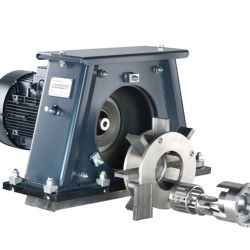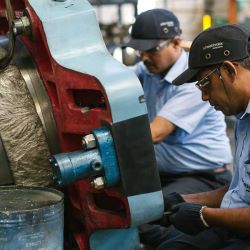What do pianos and blast machines have in common?
They’re both more tricky to move than you think, and things can go seriously wrong if you try doing it yourself.
If you have ever seen piano movers at work, the ease with which they pick up the delicate yet heavy instrument is incredibly impressive. They know exactly what to do and what not to do, how to prepare it and where to hold it. They make it look easy when it really isn’t.
Moving a blast machine is very similar. At first glance it’s just a very heavy piece of machinery, but it comes with its own specific intricacies and requirements. Understanding them will help you protect your investment on the move – or you could ask a team from Wheelabrator to do it for you.
Either way, here’s a quick overview of things to bear in mind when moving blast equipment as part of a relocation of production.
1. Know how to split the load
When planning the move and hiring cranes, you need to know what sections to best divide the machine into and, crucially, what those sections then weigh. It’s unlikely you’ll have this information to hand from standard machine documentation, but the OEM should be able to help. We frequently advise customers on how to best take machines apart for relocation and can calculate weights of sub-assemblies.
2. Take care when freeing the machine
Once you start uninstalling the machine, make sure you disconnect all cables appropriately. This sounds obvious, but generalist machine removal companies will sometimes simple cut all cables and wires to free the machine. This saves time at the point of disassembly, but can lead to costly delays when expensive cables need to be replaced and refitted.
3. Beware of moisture
You will of course have drained and cleaned the inside of the machine of any remaining abrasive before transport, not least to avoid dangerous clumping as the shot gets in contact with moisture. But it’s also important to ensure the switch cabinet is protected from any moisture entry en route to the new site.
4. Plan ahead
No two sites are the same and the specific layout of the new facility may call for changes to the blast machine in order to fit in. For example, the filter system and exhausts may need to be moved, material flow and part handling may need to be reconfigured. For a machine that requires a pit, make sure to request the technical drawings for the pit from the OEM in time.
5. Reassembling it
On reassembly, it is important to understand the markers on the machine that ensure correct alignment – particularly for longer roller conveyors. Knowing and staying within tolerances as subassemblies are rejoined is also key, and all interfaces with other machines need to be carefully reinstated.
6. It’s not just a machine
One of the most important things to remember is that you’re not just moving machinery, you’re moving a process. On restart, that process has to run just as precisely and stably as before. That means settings and parameters, as well as sensors and signals, need to be checked carefully.
Conclusion
Moving shot blast equipment is not just about the heavy lifting. Serious damage can be inflicted upon your investment if the move is not handled carefully.
The more complex or the more integrated a shot blast machine, the trickier it is to move. Simple machines will be easier to take apart correctly and reassemble, but it is always advisable to check with the OEM for advice and key information.
At Wheelabrator, we can support you with your equipment move in whichever way you need and at any stage of the process. Just give us a call. Shot blast equipment enquiries only, please - we won’t move your piano.


